

The Gems of Germany
Whether they’re “bergs” or “burgs”, these German towns remain uniquely inviting, as Ute Junker discovers.
It is enough to bamboozle any traveller. Look at any itinerary for a German river cruise and one thing jumps out at you: many of the ports seem to have remarkably similar names. So many of them end in either “berg” or “burg” - think Nuremberg, Bamberg, Wurzburg - that it creates endless confusion. In fact, “bergs” and “burgs” are far from interchangeable. The suffix “berg” - pronounced “bairg” - means mountain, so any town ending in “berg” will be perched on a hill. “Burg”, by contrast - say it “boorg” - means castle, so you can expect to find some sort of fortification or stronghold in the heart of town.
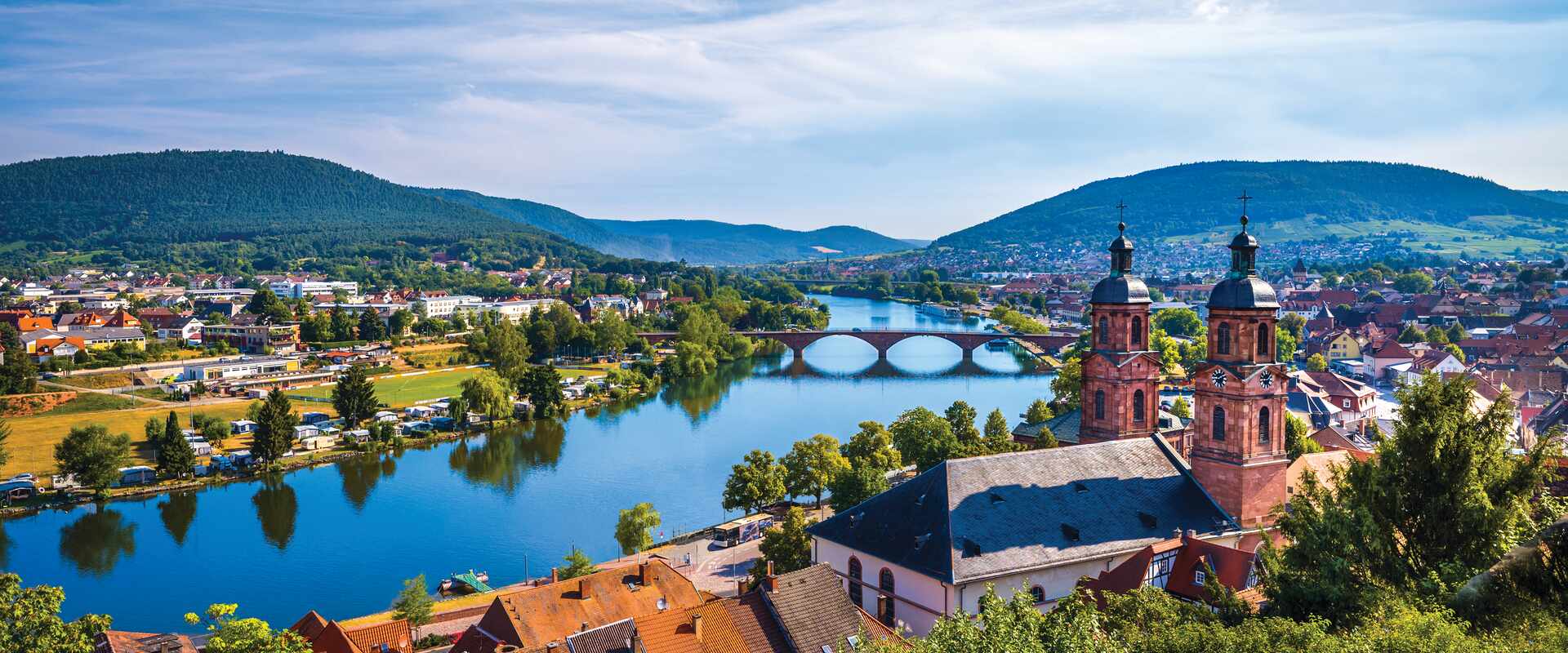
Miltenberg
Miltenberg, for instance, is perched between the banks of Main River and the forest covered hills that loom behind the town. It’s known for its lovely half-timbered houses, some of which date back more than 500 years. The town’s don’t-miss dining experience is Germany’s oldest royal inn, the Gasthaus zum Riesen, which dates back to 1590.
Wurzburg
A little way down the river, Wurzburg offers a very different experience. The town’s most prominent landmark is Marienberg Fortress, where the ruling prince-bishops made their home for centuries, but the most irresistible attraction is the building the prince-bishops built once they decided the fortress was a bit passé - the Wurzburg Residence. Its gloriously baroque interiors are among the most striking in Europe, and while only 40 of the building’s 360 rooms are open to visitors, they include some of the most spectacular.
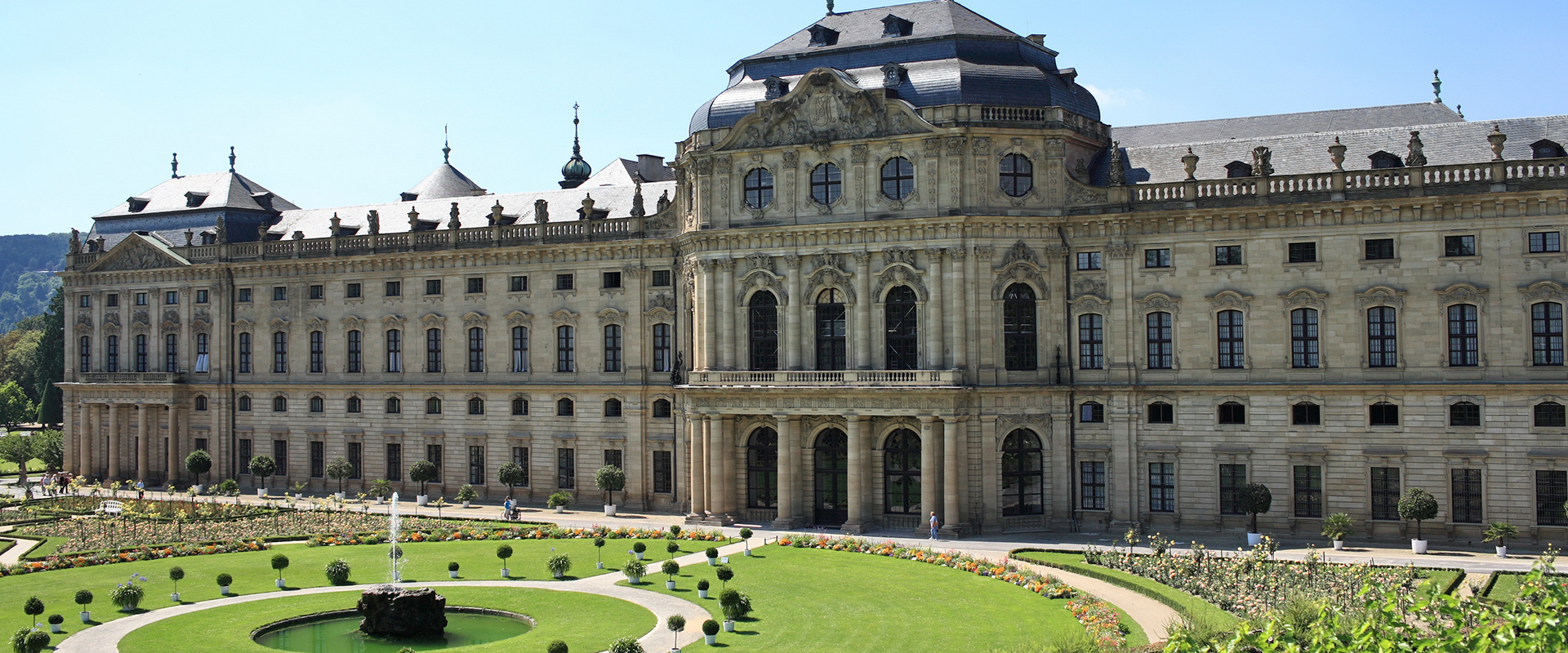
The gardens feature parterre sections, terraces, topiary, lovely wrought-iron gates, the Lime Tree Gallery where musical performances are held, cherry and yew trees, and a kitchen garden that was reconstructed in the 1990s and planted with new and historic vegetable varieties.
Away from the palace, take a stroll along the Old Main Bridge, which links the neighbourhoods on the left and right banks of the river and is lined with baroque statues of saints. On the far bank, you’ll find the Kappele Wurzburg, a pretty onion-domed church in a woodland setting.
Rothenburg
Smaller than Wurzburg, but no less charming, is the city of Rothenburg ob der Tauber, one of the best-preserved medieval towns in the world (it’s an optional tour for Travelmarvel guests). Walk Rothenburg’s impressive city walls; entry is via one of the 42 gates or towers. Or, you could easily spend your entire visit admiring the town’s many beautiful houses, such as the Master Builder’s House (which has depictions of the seven virtues and the seven deadly sins on its façade), the beautiful Old Forge, and the adorable Topplerschlösschen - the 600-year-old moated home of a former mayor.
Bamberg
Rivalling Rothenburg for sheer beauty is Bamberg. Another city run by prince-bishops, the town’s layout is marked by five churches forming a Latin cross. Bamberg is known for its well-preserved cityscape, with no fewer than 2400 heritage-listed buildings. Start your explorations in the town centre and follow the area’s narrow alleyways until you reach the river, where a remarkable town hall - complete with flamboyant frescoes - appears to float right in the middle of the water. From here, head to “Little Venice”, with its colourful fishermen’s houses, before heading to the upper town.
The town’s power centre is the Cathedral Square. This is where you will find the prince bishops’ residences, the 17th-century New Residence and the older Alte Hofhaltung palace, and the magnificent 13th-century cathedral. Wander through the lovely rose garden outside the New Residence, home to more than 4500 rose bushes, before heading towards Dominikanerstrasse where you will find the historic Schlenkerla brewery. One of nine breweries within the city limits, it’s a great place to try the local specialty, rauchbier, or smoked beer.
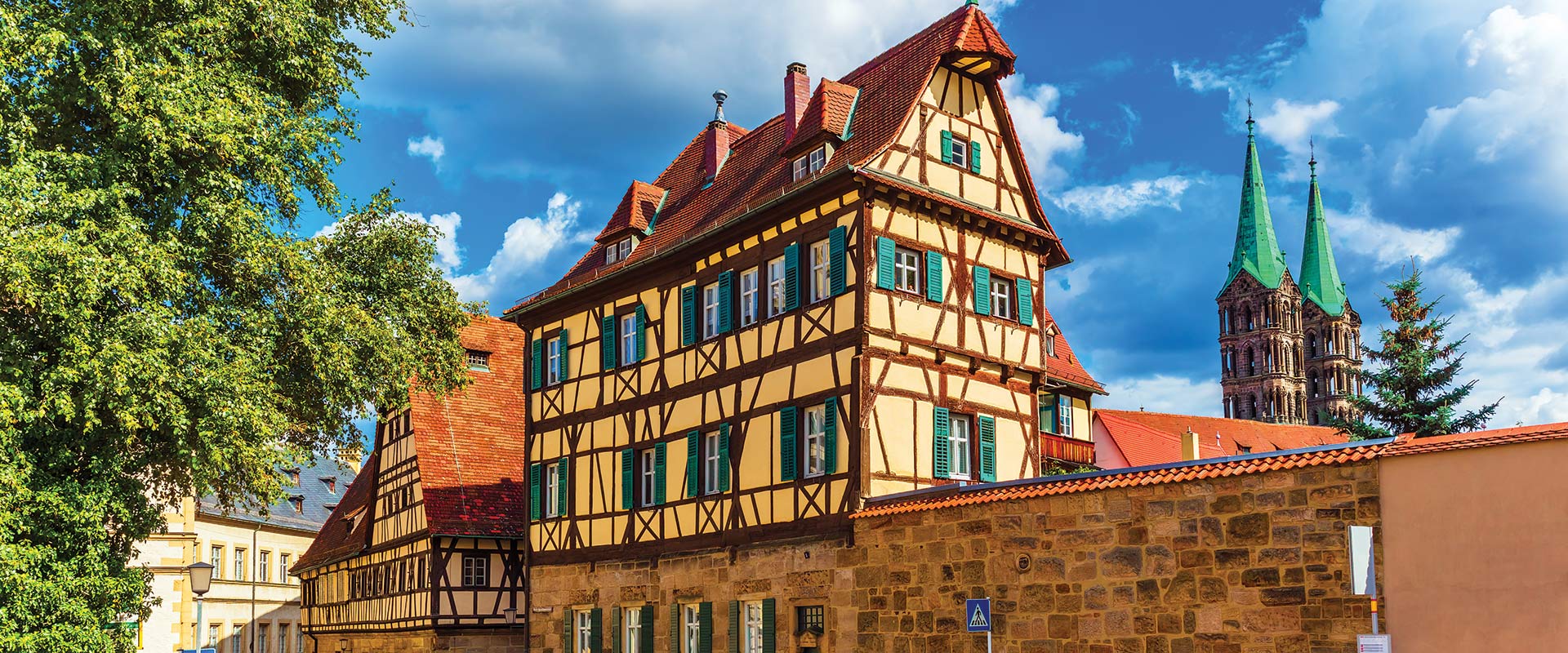
Nuremberg
Few German cities do grandeur quite as well as Nuremberg. The ornate architecture of this city on the Pegnitz River reflects its history as the unofficial capital of the Holy Roman Empire. The Gothic Frauenkirche (Church of Our Lady) is one highlight; the sumptuously decorated Schoner Brunnen (Beautiful Fountain) is another. Looming above the whole town is the Kaiserburg, or Imperial Castle.
Nuremberg is at its loveliest at Christmas, when one of Germany’s most famous Christmas markets takes over the vast town square. This is the season to feast on Nuremberg’s traditional lebkuchen, or gingerbread. The city’s other culinary specialty, bratwurst, is available all year round. Don’t let the small size of Nuremberg’s sausages put you off: these tasty treats are served three to a bun, so you won’t go hungry.
Regensburg
More medieval majesty is on display in Regensburg. The city dates back to Roman times, as evidenced by the 2000-year-old Porta Praetoria, an arched gate built by Emperor Marcus Aurelius as part of a fortress. The city’s other famous monuments include the 12th-century Stone Bridge; the Old Town Hall, which has a torture chamber in the cellar; and the lavish Schloss St. Emmeram, home to the Thurn und Taxis family. The castle is said to have more rooms than Buckingham Palace.
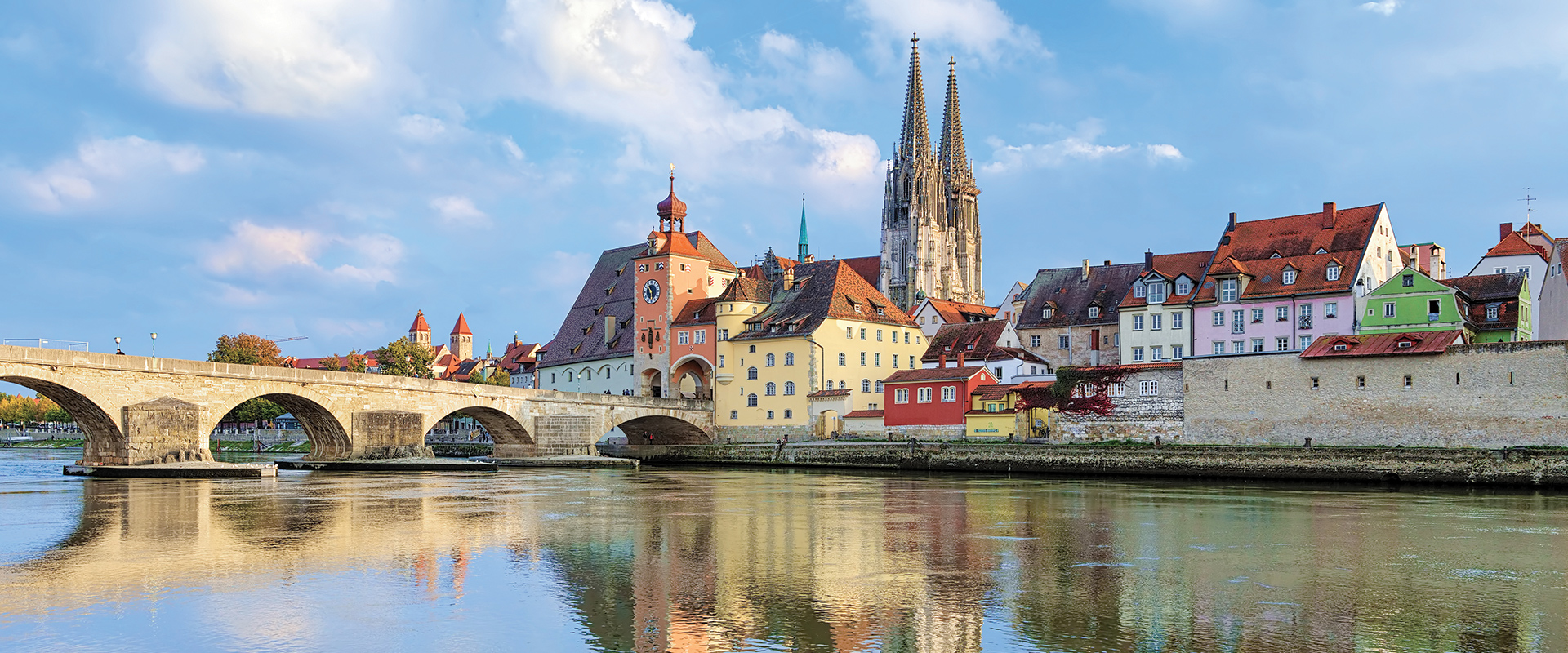
Make sure you leave enough time for a bit of a wander. Regensburg is a lively place, with more bars per capita than any other German city, and there are plenty of hidden gems to be discovered by strolling its historic streets. Keep an eye out for the Adler-Apotheke, a pharmacy dating back to 1610, and the 13th-century Golden Tower soaring 50 metres into the sky.
Start Planning

European Gems
Amsterdam to Budapest
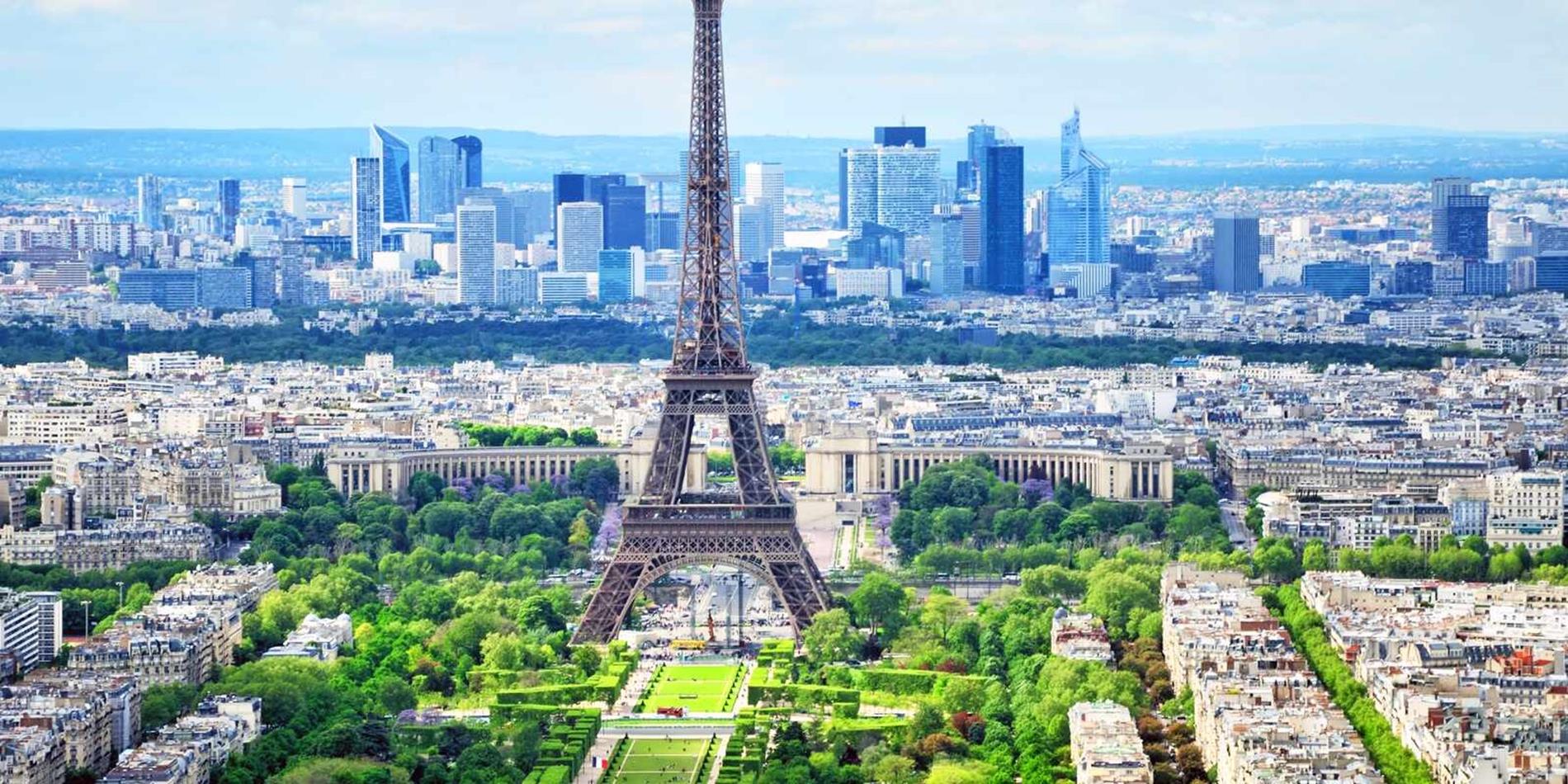
European Gems
Paris to Prague

European Gems
Budapest to Paris

European Gems
Amsterdam to Budapest

European Gems
Paris to Prague

European Gems
Budapest to Paris



